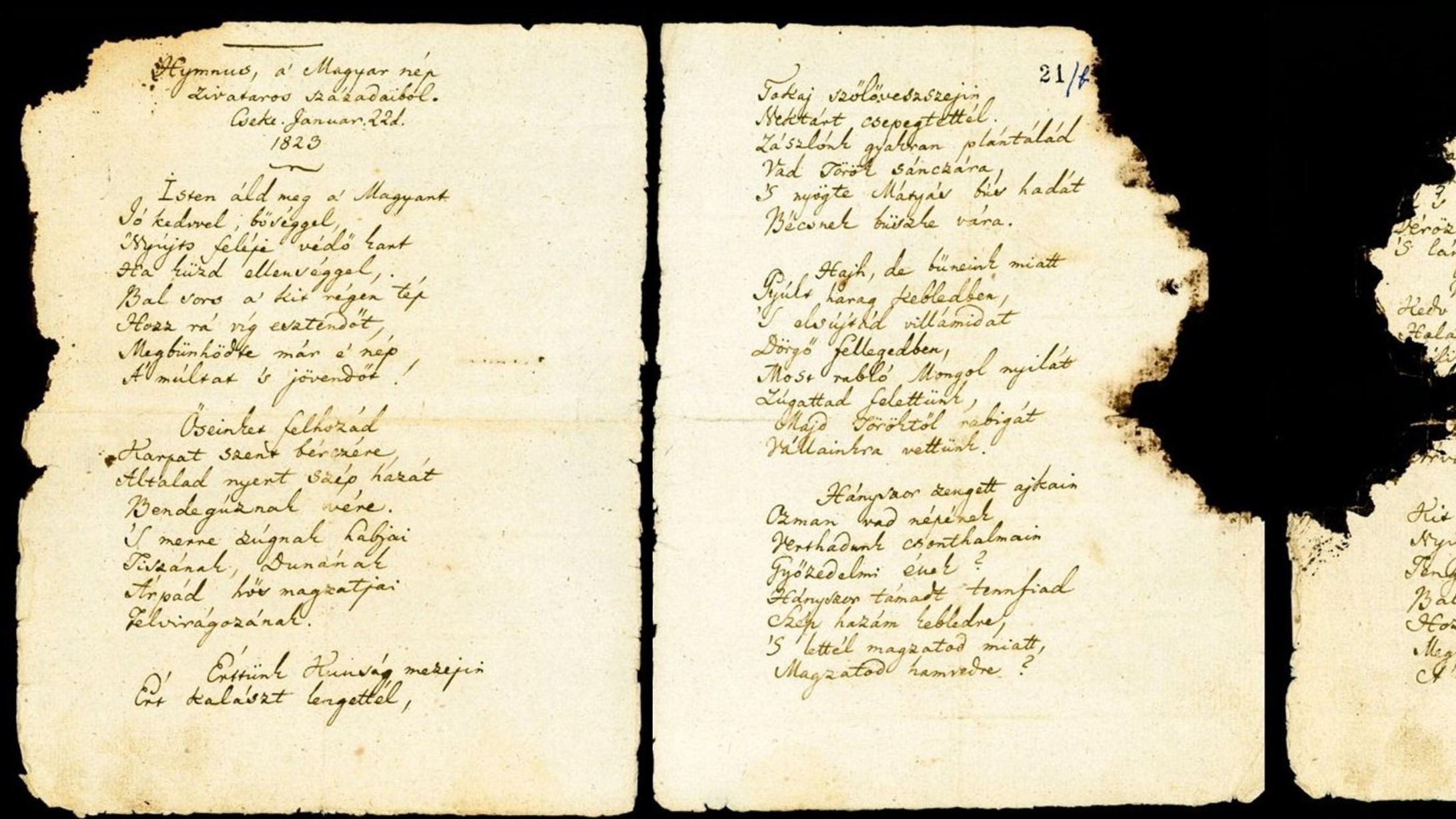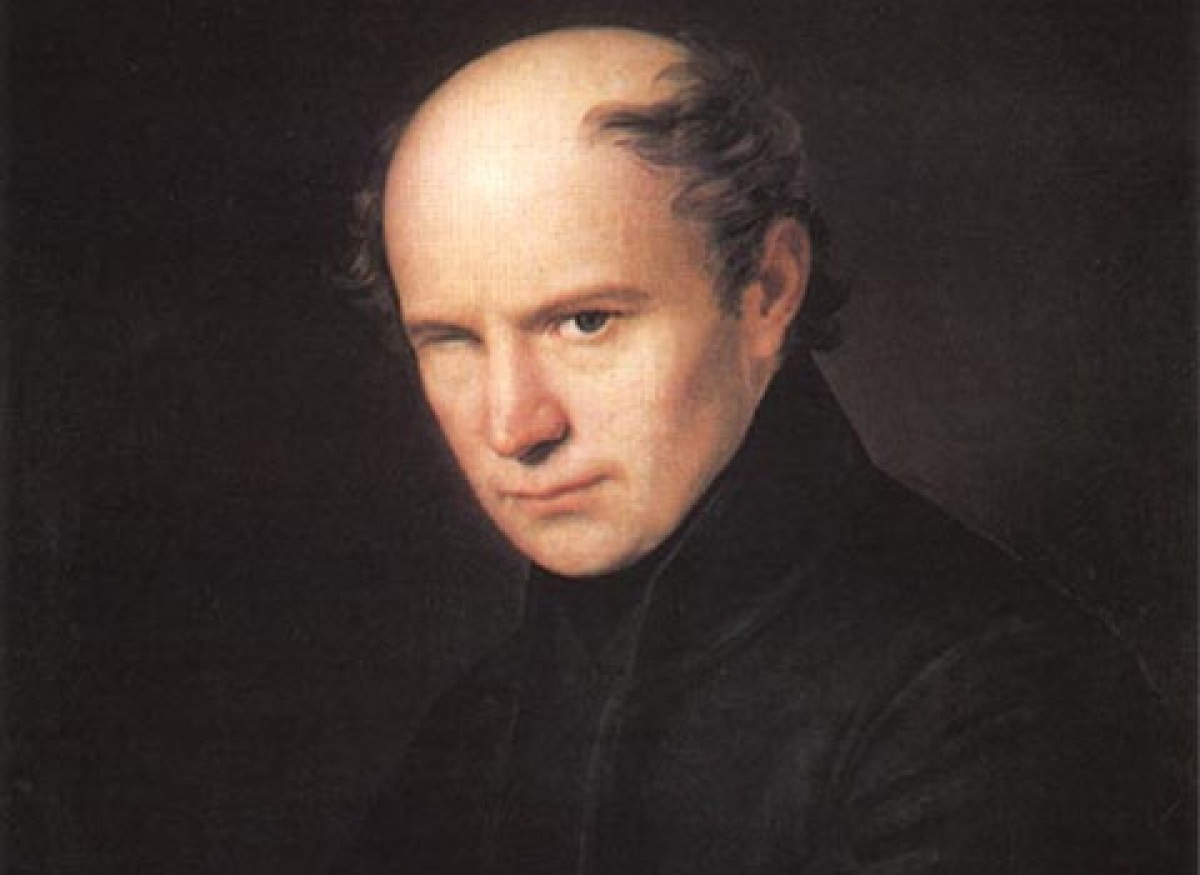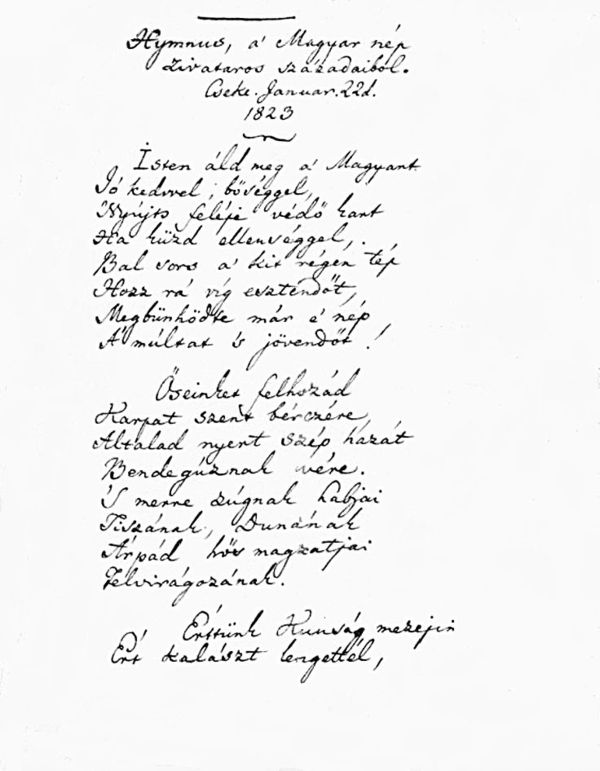
Hungary has been celebrating the Day of Hungarian Culture on January 22nd, since 1989. The idea of creating such a holiday came from pianist Árpád Fasang (uncle of the world famous organist László Fasang). The chosen date is not coincidental either. On this day (in 1823) Hungarian poet, Ferenc Kölcsey, completed the manuscript of his poem “Himnusz.” His work was later set to music by the Hungarian composer Ferenc Erkel, making it the Hungarian national anthem. Although the great poet wrote “Himnusz” almost 200 years ago, it only became an official national anthem after the amendment of Hungary’s constitution during the democratic transition of the country in 1989.
This article was originally published on our sister-site, Ungarn Heute.
“This day should remind us that we can look back on a thousand-year heritage and that we have much to be proud of, as this nation has given much to the culture of Europe and the world. It is a heritage that gives us support and energy for our benefit, and can also contribute to the solution of today’s problems,” wrote pianist Árpád Fasang in 1985, after raising the idea of the commemorative “Day of Hungarian Culture.”
Related article
Day of Hungarian Culture: How 'Himnusz' Became Hungary's National Anthem
The day of Hungarian culture is celebrated across the country on January 22. Ferenc Kölcsey finished his poem Himnusz 196 years ago today. Little did he know that his poem—one he didn’t even consider as his best work—would go on to become Hungary’s national anthem. Literary historian and writer Krisztián Nyáry recalled the adventurous and […]Continue reading
Since Hungarians did not have their own national anthem until the 19th century, the demand for a song symbolizing the nation grew greater and greater. During the repression of the Habsburg rulers (before 1844, even the Hungarian language was not considered an official language in Hungary) there was an even stronger demand for a common anthem that could unite the whole Hungarian nation.
Fact
The manuscript of Ferenc Kölcsey’s poem is kept in the National Széchényi Library. The collection of millions of items that can be found there contains just under two hundred documents that are not owned by the library, including the manuscript of the National Anthem. The priceless document remained in the possession of the family after the poet’s death.

Manuscript of the “Himnusz” with the original title “Hymnus, from the stormy centuries of the Hungarian people.” Photo via Wikimedia Commons
Those of the Reformed Church, meanwhile, sang Psalm 90 as a hymn.
In addition to these two, the forbidden “Rákóczi March” was also popular and was arranged by several composers, including Ferenc Liszt. The Austro-Hungarian empire’s imperial anthem, was of course out of the question, especially because it was played after the execution of the 13 martyrs of Arad.
Related article
Thirteen: The Execution of the Martyrs of Arad
Arad, 1849. The morning of October 6th, just before 7 in the morning. This moment, chosen by Julius Jacob von Haynau, Austrian general and military governor of a defeated Hungary, was a symbolic one, as it was the one-year anniversary of the outbreak of the Vienna uprising. On this day, 13 military leaders of the […]Continue reading
The text of today’s Hungarian anthem was finally written in 1823 by Ferenc Kölcsey, the great poet of the reform era. It was first published in 1829. The music was composed in 1844 by the composer and conductor Ferenc Erkel, who won a composition contest with it. It premiered at the National Theater in Pest on July 2-9, 1844. The first open-air public performance took place in Óbuda on August 10, 1844, on the occasion of the inauguration of the steamship that bore the name Széchenyi. The hymn was declared a national prayer based on the collective agreement of Hungarians, but it did not become official for a long time.
Fact
Ferenc Kölcsey is one of the most important personalities of Hungarian classical literature. He was a politician and language innovator, honorary member of the Hungarian Academy of Sciences, founder of the Kisfaludy Society.
Although the text of the present Hungarian anthem dates back to 1823, the question of the anthem was first raised in the Hungarian Parliament in 1901, when opposition representative László Rátkay protested in an interpellation “why the Austrian national anthem is played first at a Hungarian national celebration.”
“The Austrian Emperor was not here [at the celebration]; and even if the Austrian Emperor had been here: since he is also the King of Hungary, there’s the Hungarian anthem, let us welcome him with it.”

The bill submitted by László Rátkay. Photo via Wikimedia Commons
Then, on April 23, 1903, Rátkay presented a bill consisting of two paragraphs: “On the anthem of the united Hungarian nation,” to which the poem written by Ferenc Kölcsey and the score by Ferenc Erkel were attached, which were passed by the National Assembly but not ratified by King Franz Joseph I of Hungary, so it could not officially enter into effect.
Fact
O God, bless the nation of Hungary
With your grace and bounty
Extend over it your guarding arm
During strife with its enemies
Long torn by ill fate
Bring upon it a time of relief
This nation has suffered for all sins
Of the past and of the future!
/1st verse of the Hungarian national anthem
Kölcsey’s hymn even became the national prayer, and after several attempts, was finally legally protected in 1989 when it was incorporated into the Hungarian Constitution. Even the preamble of Hungary’s latest constitution, the “Fundamental Law,” which came into effect on January 1, 2012, begins with the first line of the national anthem: “O God, bless the nation of Hungary!”
Fact
According to an anecdote during the socialist era, the general secretary of the communist party, and de facto leader of Hungary, Mátyás Rákosi, made plans to have the anthem replaced by one more suited to the Communist ideology. The poet and composer he had in mind for the task, Gyula Illyés and Zoltán Kodály respectively, both refused, saying: “The old anthem is fine, there is no need for a new one, it is already written, and nothing can be added or taken away from it.” The issue was then taken off the agenda. In the 1950s, the song was not allowed to be sung with the lyrics because of its overly “prayer-like” character; only the music was authorized for playing.
In the featured photo: the original manuscript of the poem “Himnusz”. Photo via Wikimedia Commons




